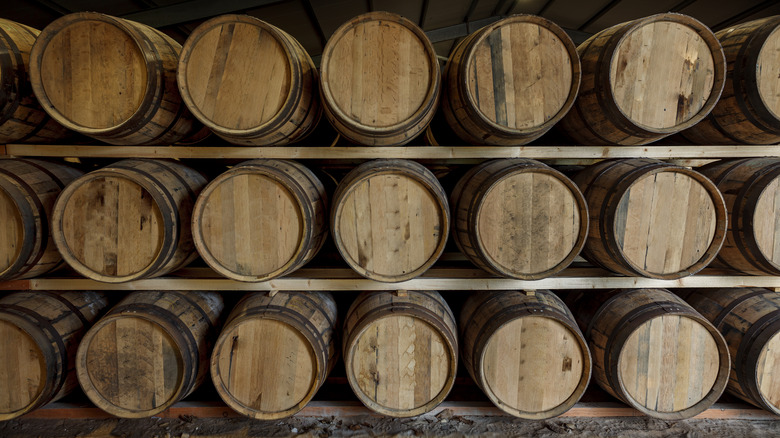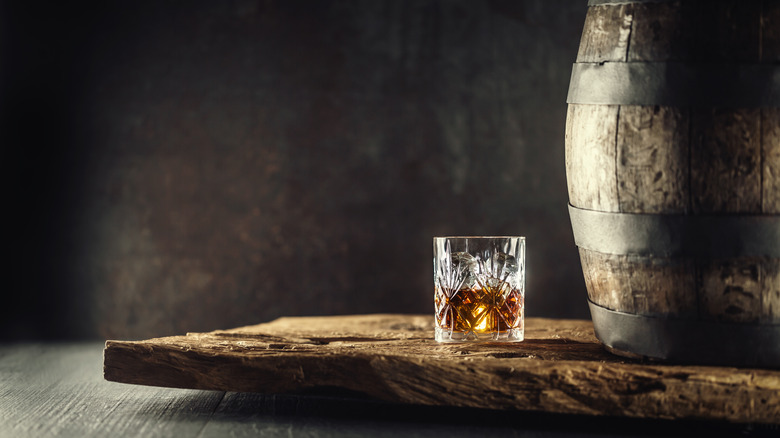How Does Aging Bourbon In Tequila Or Cognac Barrels Affect Its Taste?
The process of barrel aging spirits goes back to ancient times, and historically, distillers have played around with the character of the barrels themselves. Fifteenth-century French distillers used to age their cognac in charred barrels, and to this day, peated scotches are often finished in wine barrels to temper the smokiness of the scotch with the sweetness of the wine.
Today, companies like the World Whiskey Society are producing bourbons that have been aged in tequila barrels, cognac barrels, port barrels, and sherry barrels. These limited releases are often highly experimental, using both traditional finishing barrels (like cognac), as well as less traditional ones (like tequila). "With finishing barrels, the goal is to find one that compliments the flavor of the base spirit, or we can also go in the opposite direction and find notes that contrast with the flavors present," Alex Kogan, the Master Blender for World Whiskey Society, told Tasting Table. "By using different finishing barrels, we can compare or contrast with the base spirit, enabling us to add an incredible amount of roundness and depth to the final product."
In addition to changing the flavor of the bourbon, it also greatly changes the smell. Pop open a bottle of 6 YO Straight Bourbon Whiskey finished in a Tequila Barrel and you'll think you've opened a bottle of tequila, because the citrusy agave smell will hit you first, creating a rather unusual sensory experience.
An age of experimentation
"Part of the fun of barrel aging is not always knowing what the final result will be," Alex Kogan explained. "It's all about experimentation, time, and taste. Tequila barrels lend citrus and peppery notes, so we used a bourbon with similar characteristics. The notes in this particular bourbon include orange peel and baking spice, so the tequila barrel pairs perfectly with those flavors and adds a new layer of complexity."
Kogan points out that this style is still in an experimentation stage, a "mixing of old-world techniques with modern ingenuity." Each batch might come out differently depending on what is tweaked. For instance, bourbon aged too long in a cognac barrel might lose some of its intrinsic character, but if it isn't aged long enough, it won't take on any of the cognac flavors. And barrels can only be used a limited number of times before they lose potency.
Because the bourbon takes on some of the characters of the barrel that it's aged in, it can be used to add a twist to a traditional cocktail using a different spirit. For example, bourbon aged in a rum barrel might work in a Dark and Stormy, and bourbon aged in a cognac barrel might make for a delightful riff on a Sidecar.

